Copyright © 2018 VSNAP Technology Solutions Pvt Ltd | All Rights Reserved.

Entertainment
Have you ever been spellbound by way of a dancer's beautiful actions and fascinating memories? Well, Indian classical dance elevates this revel in to any other dimension!
It's no longer just about entertainment; those old-age dance forms, surpassed down through generations in unique Indian regions, are like colorful threads weaving together information, spirituality, and innovative expression.
What is Indian classical dance?
Indian classical dance is a fancy and expressive way of life from India, passed down through generations and full of cultural and religious importance. It comes in many patterns, each with precise moves, costumes, and song.
These dances tell tales from ancient times, assisting preserve traditions alive and sharing emotions. With tricky footwork and easy movements, Indian classical dance showcases India's wealthy manner of existence and stays a cherished art form.
History of Indian Classical Dance
Indian classical dance is a colourful part of India's heritage, reflecting traditions and spirituality. Scholars like Bharata Muni wrote about dance in texts just like the Natya Shastra, laying the foundation for diverse patterns. Different regions evolved specific dance forms, each with its personal actions, gestures, and song.
The Bhakti movement introduced deeper which meaning to dance as a form of devotion. Despite demanding situations all through colonial rule, Indian classical dance noticed a revival after independence.
Today, it keeps to captivate audiences with its grace and storytelling, serving as a reminder of India's wealthy cultural historical past.
Here is the List of Top 8 Classical Dances of Indian States
- Bharatanatyam (Tamil Nadu): Famous for telling stories via expressive moves, centered footwork, and sleek hand gestures.
- Kathakali (Kerala): Recognizable for its bright make-up;quot fancy costumes, and stylized acting, often displaying Hindu mythological stories.
- Odissi (Odisha): Known for its fashionable poses, flowing moves, and expressive eyes.
- Kuchipudi (Andhra Pradesh): Full of energy with powerful memories and colorful costumes, every now and then along with acrobatics and mime.
- Manipuri (Manipur): Gentle and swish movements, often danced to devotional songs and deeply related to Vaishnavism Hinduism.
- Mohiniyattam (Kerala): A dance completed only thru women, celebrated for its swish moves, fluid body language, and emphasis on feminine splendor.
- Sattriya (Assam): Originating from Assam's monasteries, it is marked with the aid of lively footwork and a robust" masculine vibe.
- Kathak (North India): Famous for its storytelling, complex footwork, and rhythmic styles, often inspired by Mughal traditions.
So, these are the different types of Indian classical dance.
Benefits of Classical Dance
When you learn an Indian classical dance, it's now not pretty much getting the movements right. It brings along a group of appropriate things, like:
- Keeping Fit: Helps you turn out to be extra flexible and coordinated and stand tall.
- Sharpens the Mind: Boosts reminiscence, concentration, and staying disciplined.
- Understanding Culture: Gives you a better hold near of Indian history and customs.
- Expressing Feelings: Builds confidence and lets you express yourself artistically.
Some of the famous classical dancers are:
Bharatnatyam:
- Rukmini Devi Arundale: Famous for reviving Bharatnatyam and making it famous once more in the twentieth century. She founded Kalakshetra, a school focused on Indian classical dance and tune.
- Padma Subrahmanyam: Highly respected for her modern thoughts in Bharatnatyam and her in-depth research in Indian classical dance.
Kathak:
- Birju Maharaj: Knownfor his thought for his incredible footwork, expressive face, and deep records of Kathak. He belongs to the Lucknow Gharana of Kathak.
- Sitara Devi: Known because the "Kathak Queen" she end up a pioneering dancer famous for her thrilling performances and faultless rhythm. She helped Kathak benefit international recognition.
Kuchipudi:
- Dr. Vempati Chinna Satyam: A chief in Kuchipudi dance;quot credited with revitalizing and organizing the dance style. He based the Kuchipudi Art Academy to teach others.
- Yamini Reddy: Most Inspiring person in India for Kuchipudi dance recognized for her sleek movements, emotional expressions, and determination to conventional Kuchipudi fashion.
Odissi:
- Kelucharan Mohapatra: Renowned as a master of Odissi, he performed a number one position in bringing Odissi again into the highlight. He created new dances and mentored numerous college students.
- Sanjukta Panigrahi: Celebrated for her fluid moves, splendor, and profound emotions in Odissi. She captivated audiences with her performances and left a massive mark on Odissi's dance.
Manipuri:
- Guru Bipin Singh: A well-known personality in Manipuri dance, he helped popularize Manipuri dance beyond northeastern India. He installed the Manipuri Nartanalaya to train others about Manipuri dance.
- Ratna Kumar Sinha: A legitimate Manipuri dancer known for his expertise in Manipuri Raslilaand other conventional dances. He's committed to keeping Manipuri dance and sharing its cultural richness.
Similar Blogs
Gestures and Expressions
In Indian classical dances, gestures, and expressions communicate volumes, conveying feelings and narratives wordlessly. Every hand motion, eye look, and facial expression is meticulously choreographed to depict a myriad of emotions and meanings. The dancer's smooth steps on stage made them look like a chameli flower moving gently in the wind, showing the beauty of Indian classical dance.
Hand gestures, or "mudras" portray unique ideas like love, devotion, or nature, while facial expressions, known as"abhinaya," breathe life into characters;quot showcasing a spectrum of emotions from pleasure to anger.
Dancers expertly mixture those factors, crafting stories that resonate deeply with audiences and transcending cultural and linguistic limitations.
Through their movements, Indian classical dancers weave a charming tapestry of emotion and storytelling;quot universally understood and favored.
Costume and Makeup
In Indian classical dances, costumes, and make-up play vital roles in developing fascinating performances. Let's find out how dancers dress and follow makeup in numerous styles:
- Bharatanatyam: Dancers don vibrant "Kanjivaram sarees" and ambitious make-up, accentuating expressions expressions with darkish eye make-up and bright jewelry. Male performers choose dhotis paired with colourful shirts, retaining a simple but dignified appearance.
- Kathak: Adorned in flowing "ghagras"dancers have a look at natural-looking make-up, subtly highlighting capabilities with gentle eye make-up and lipstick. Traditional earrings provides appeal; whilst male dancers put on kurtas or dhotis, ensuring their expressions stand out with slight makeup.
- In Mohiniyattam, dancers placed on quite white or off-white saris with vibrant gold borders. They maintain their makeup mild and delicate, just which includes a piece to precise their emotions. They do now not put on masses of jewelry, only a little to look glossy. And for the men, they stick with lifestyle with white dhotis and shirts, retaining their make-up easy for a fashionable appearance.
- Kuchipudi: Vibrant pleated saris and ambitious makeup complement energetic performances with expressive eyes and lips. Traditional earrings complements the appearance; at the same time as male dancers wear dhotis with colourful vests, including polished touches with subtle makeup.
- Odissi: Dressed in unique "Sambalpuri" saris, dancers create complex make-up designs to portray divine characters: emphasizing features with darkish eye make-up and vibrant lipstick. Temple rings provides splendor, whilst male dancers spotlight graceful expressions with powerful makeup.
- In Sattriya, woman dancers wear colorful"mekhela chadors" that stand out with their superb colorations. They preserve their makeup clean, letting their emotions show with diffused eye make-up and a piece of lipstick. Their conventional Assamese earrings completes their look. The men put on dhotis with kurta or shirts, with minimal make-up to awareness on their abilities.
- Kathakali dancers dress up in complicated costumes and ambitious makeup to turn out to be characters. Imagine colourful skirts and fancyfancy headgear stealing the highlight. Their makeup is difficult and colorfulcolor, highlighting their eyes, lips, and emotions. For the guys" heavy make-up and grand costumes deliver famous characters to lifestyles on degree.
- Manipuri: Colorful costumes and sensitive make-up beautify natural splendor, complemented by way of using; pretty jewelry and necklaces. Male dancers wear dhotis with waistcoats, keeping make-up light to show off their swish movements.
Music and Instruments
Have you ever found how Indian classical dances and music seem to bounce together? It's like they're are old friends, perfectly in sync with each other! The track that accompanies the ones dances is like a treasure trove of historic melodies and rhythms designed to fire up all forms of feelings.
And guess what? It's the tabla, sitar, flute, veena, mridangam, and sarangi that carry this magical song to existence! They each have their very own particular sound and fashion, but whilst they arrive collectively, it's far natural magic.
Just imagine the tabla's lively beats or the flute's soothing melodies including that extra sparkle to the dance performances.
Indian classical music is not without a doubt heritage noise; it's far like a storyteller weaving reminiscences thru dance steps and music notes, making each normal overall performance experience like a adventure to a unique region.
Challenges and Opportunities
Indian classical dances have their truthful share of demanding situations and thrilling possibilities in modern day global. Challenges encompass things like fewer more youths showing interest, accessibility issues for a few companies, and the conflict to stability lifestyle with new mind. But there also are lots of opportunities to develop and innovate.
For example, the usage of technology to attain more humans and collaborate globally, changing ideas with super cultures to make the dances richer, educating greater humans approximately the ones art forms, getting useful resource from the government for protection efforts, and combining one of a kind patterns to attract a miles wider goal marketplace.
By tackling the ones challenges head-on and making the maximum of these opportunities, Indian classical dances can maintain flourishing and stay large for years yet to come.
Technology in Dance Education
Isn't it great how technology has made learning dance loads less difficult and fun? Check out the ones high-quality approaches it's miles changed dance training:
- Online Classes: You can take dance training from fantastic instructors all over the international right from your property, and also you get to head at your personal pace!
- Video Analysis: Record yourself dancing to see what you are doing nicely and wherein you may enhance. Plus, you could proportion your motion photos with instructors or buddies for helpful remarks.
- Virtual Reality (VR) and Augmented Reality (AR): Imagine entering into digital dance worlds to exercising your movements or maybe carry out on digital stages. It's like dancing in a video game!
- Motion Capture Systems: These cool sensors track the way you circulate at the same time as you dance, imparting you with insights to make your movements even better.
- Dance Apps: There are tons of apps and software obtainable that offer dance schooling, assist you create your very personal dances, or even provide you with personalised exercise plans.
- Social Media: Connect with dancers from all over the global, percent your dances, and get manual from a large, great dance community.
- Live Streaming: Now, you may watch dance performances and workshops from everywhere within the worldwide right from your pc or cellular phone. It's like having the the front-row seats for the best suggests!
Due to technology, absolutely everyone can learn how to dance, regardless of wherein they are or how a good deal enjoy they have got. Let's get dancing!
So, Indian classical dances combination old traditions with inventive expression, delighting audiences with their charming moves and stories. Evolving through the years, they hold to enchant people worldwide, showcasing the beauty and area of expertise of India's artwork.
Embrace tradition, and express yourself! Start your adventure with Indian classical dance.
Trending Blogs
Most Frequently Asked Questions?
How many forms of Indian classical dance are there?
There are 8 essential varieties of Indian classical dance: Bharatanatyam, Kathak, Kuchipudi, Odissi, Manipuri, Mohiniyattam, Sattriya, and Kathakali. Each type comes from a one-of-a-kind a part of India and has its very own special capabilities.
Can everyone perform Indian classical dance?
Anyone can examine and do Indian classical dance, irrespective of how old you're, what gender you are, or where you return from. But to get honestly excellent at it, you want to be dedicated, work hard, and get the proper training to analyze all the fancy actions and expressions.
What is Indian Classical Dance?
Indian classical dances are vintage dances that people in India have been doing for a clearly long term. There are extraordinary types of those dances, and each one has its personal unique moves, song, and stories.
Categories
Latest Blogs
By Admin
How Indians Can Invest in Real Estate Abroad: Rules, Risks, &Opportunities
By Dan E Kuriakose
11, October 2025
Other Entertainment Blogs
REALESTATE IN INDIA
Property In Bangalore
Property In Hyderabad
Property In Chennai
Property In Pune
Property In Kochi
Types of Shankh for Home Decor & Vastu
Unlock Positive Energy with Proper Mirror Placement in Vastu
Combining Vastu and Feng Shui for a Healthier, Happier Home
How Feng Shui and Vastu Can Transform the Energy of Your Kitchen
Unlocking the Secrets of Your Home’s Energy with Vastu and Feng Shui
TV Placement Vastu: How to Improve Your Home’s Energy Flow
Vastu Shastra for Bedroom: Colors, Furniture, and More
Is Your Home Missing Positive Energy? Vastu for Home Mistakes
How to Remove Negative Energy from your Home
Vastu Shastra for Balcony Design
Stunning Vastu Colours for Living Room
Why Having An Aquarium Is Lucky For Your Home
How To Fix Pooja Room Vastu dosha?
Benefits of Using a Lion Door Knocker
Benefits and significance of Shami Tree
Boost Your Life with Vastu Tips for Keeping Kamdhenu Cow
Tips to clear Vastu Doshas from your Home
Vastu Helix: Solutions for Vastu Defects and Energy Harmony
Vastu for Apartments- Tips and Ideas
10 Bad Luck Plants to Avoid in Home
10 Main Door Colours as per Vastu
Enhance Your Home with the Elegance of Arrowhead Plants
Best Vastu Direction for Study Table - Boost Focus & Concentration
Enhance Your Wellbeing with a Vastu Chart
Vastu Chakra for Home Transform Your Space & Boost Vibes
South West Facing House Vastu Secrets and More to Know
Unlock Prosperity: The secret of 7 Horse Painting
15 Vastu Shastra's Principle in Agricultural Land
Elephant Statues - Vastu Wisdom for Your Home
Lucky Plants for Office Desk - 15 Best Office Desk Plants
Griha Pravesh 2024 - Griha Pravesh Pooja Muhurats
14 Things Not To Keep At Home - Vastu Tips for Home
All About the Benefits of Parijat Tree
Best Lucky House Names as per Vastu for 2024
Vastu Pyramid - Embracing Positive Changes at Home
Best Mandir Direction in Your Home -Vastu Tips
Feng Shui Colours to Create a Harmonious and Balanced Home
Vastu Paintings to Improve Positivity in Your Home
Laughing Buddha - Bringing Joy Home
Get Rid of Vastu Doshas using Vastu Yantra
Vastu Influencing Relationships
Does Hanging Horse Shoe in Home Bring Good luck as per Vastu?
Vastu Plants According to Directions
Vastu Shastra Vs Feng Shui: An Overview
Vastu Shastra Tips for North Facing Homes
Channel Postivity & Greenery through Vastu Gardens
The Essential Guide for Vastu Paintings in your Home
Simple Dining Room Vastu Hacks
All about Vastu Colours for Home
Main door vastu for flats - Dos and Don’ts
How much do you know about Vastu for Flats?
How Staircase Vastu Helps to Bring Positivity to Home ?
Comprehensive List of Griha Pravesh Muhurats and Dates 2021
The Best Vastu Items For Home :7 Lucky Charms For Home
5 Best Vastu Trees for Home: Go Green and Grow Positive!
5 Vastu Tips For Mirror Position in Home
Top 9 Vastu Tips for Home to bring in Positivity and Good Luck
7 Vastu Tips for Kitchen in your Home: Do's and Dont's
10 Best Ways to Adapt Vastu for Living Room to Bring Positivity.
Best Real Estate CRM Software in India for 2025-2026
Top 10 Best CRM for Real Estate in India
Need for Social Media for Small Businesses
What’s the Difference Between a Free and Paid CRM in India?
GST Rate Cuts 2025 List of Items and New Rates
Upcoming Infra Developments Near Attibele, Bangalore
Meet the Big 5: Bengaluru’s New Civic Corporations Explained
What Makes Retrofitting a Smart Upgrade in Any Market?
Performance Marketing vs Traditional Digital for Builders 2025-26
Why Builders Need More Than Just a Website in 2025 -2026?
Hidden AI Innovations Shaping Humanity’s Future | 2025 Insights
Prefab Housing: The Smart, Stylish Solution for Modern Living
Buying a Second Home in Bangalore in 2025 – What You Need to Know
How to Perform Keyword Gap Analysis for SEO
International Day of Happiness 2024 United Nations
10 Gifts India Gave to the World
Temples Near Ram Mandhir in Ayodhya
Divine Comfort: Accomodation Near Ayodhya Ram Mandir
How to reach Ayodhya Ram Mandir?
Ram Mandhir 2024 - New Darshan, Aarti Timings & More
Hidden Gems in India: Why Maldives, When You Have Lakshadweep?
Bangalore Real Estate 2024: The Surge & Outlook
Ayodhya Ram Mandir & Infrastructural Development
Top 12 Temples to Visit in Tirupati
20 Best Architects in the World
Metaverse - The Rise of Virtual Realty?
Bhulekh Bihar - How to Check Bihar Land Record Online ?
All about Patta Chitta - Tamil Nadu Land Records Online
A Khata and B Khata Difference - All About BBMP Certificates
6 Types of Sand used in Construction
Types of Bonsai Trees for Home
10 Best Vastu Tips for Wall Clock at Home for Lucky Times Ahead!
Best Vastu Fishes for Home - Aquarium Direction and its Benefits
15 Proven Vastu Plants for Home [Comprehensive List]
10 Different types of Wood in India that can be used for Furniture
List of Luxury Apartments in Bangalore 2024
Modern vs Traditional Interior Design Styles: A Complete Guide
Upgrade Your Dining Room Like a Pro - Without the Price Tag
The Best Pooja Room Interior Design Ideas for a Peaceful Home
Why Your Interior Design Isn’t Working: Common Mistakes Explained
Wall Shelf Design Ideas to Add Style and Maximize Your Space
Bold Kitchen Color Combos That Will Transform Your Space
Unique Colour Combinations to Refresh & Brighten Your Living Room
Wooden Carved Main Doors: Nostalgia, Design, and Timeless Charm
Trending Wooden Door Designs for Modern Indian Homes in 2025
The Art of Floor Molding Baseboard: Small Details, Big Impact
Top Color Blocking Wall Ideas to Make Your Space Truly Pop
Top Home Decor Trends in India: A Simple Guide to Style 2025
Improve Interior Comfort Using Smart & Effective Acoustic Design
Style Your Console Table: Easy and Simple Decorating Tips
Raw Materials, Refined Style: The Industrial Interior Story
How to Turn Your Hallway into a Welcoming Statement Space?
Top Color Trends for Modern Interiors to Inspire Living in 2025
The Ultimate Guide to Popular Interior Design Themes
Trending Now: Top 7 Window Curtains Styles to Refresh Your Home
Open Shelving in Kitchens: Not Just Trendy, But Transformative
The Color Duo That’s Transforming Minimalist Living Rooms
Top 10 Interior Designers Transforming Bangalore Homes in 2025
Transform Your Space by Fixing These 4 Rug Mistakes
The Timeless Appeal of Classical Interior Style in Every Room
Filling the Silence: My Perspective on Negative Space
Open Kitchen Living Room Ideas Combo: The One Must-Know Rule
Interior Trends That Aren’t Just for Instagram - Discover Them
How Can a Bay Window Quietly Transform Your Entire Home?
Pros and Cons of Vaulted Ceilings: What You Need to Know
Mix and Match: Boho Interior Design for Every Room
How to Use Pastel Colors Interior Decor to Brighten Your Space?
Eclectic Interior Design: A Style as Unique as You Are
Why Space Planning Is the Secret Sauce of Interior Design
Epoxy Flooring Designs: A Perfect Blend of Beauty and Durability
Highlighter Tiles: Transform Any Room with Color and Style
Bring Nature Indoors: Wall Planters That Wow
Carpet Cleaning: Do's and Don'ts You Need to Know
Parquet Flooring: The Timeless Trend That’s Back in Style
Track Lighting: Shine a Light on Style With Ease
How to Spot and Remove Black Molds in Your Home?
French Windows: The Perfect Blend of Functionality and Elegance
The Ultimate Wallpaper Removal Guide You Need to Read!
Why Terrazzo Flooring Is the Best Choice for Durability and Style?
From Clutter to Clean: How a Folding Wall Table Transforms Space
Why Are Homeowners Choosing Decolam Sheets Over Costly Options?
Minimalism vs. Maximalism: Finding the Perfect Design Balance in 2025
Color Palettes for 2025: Exploring Earthy Tones and Digital Brilliance
Stylish and Functional Wooden Door Designs for Every Home
Creating a Work-From-Home Haven: Design Ideas for 2025 in India
Brobdingnagian Interior Designs for Your Home
What Makes Interior Designers in Chennai Stand Out?
Top 5 Interior Designers in Hyderabad
Creating Your Dream Gaming Room: Top Wallpaper Designs
Tips for Choosing the Right Furniture
Comprehensive Guide on Top 10 Interior Designers in Kochi
10 Plants you can Easily Grow in a Bottle
Transform Your Space: Affordable PVC Wall Panel Ideas
Creative Yellow Colour Wall Paint Ideas for Your Home
10 Indoor Plants that Live Over 50 Years
What Makes Rosewood Furniture the Best Choice for Your Home?
Creative Wall Painting Ideas to Elevate Your Home Decor
Quiet luxury Interiors for Home
Stunning Exterior Wall Tile Designs for Every Home Style
Exploring the Different Types of Sliding Doors
French Interior Design Ideas For a Sophisticated Look
Biophilic Design: Transform Your Space with Nature
Achieve Zen Living: Mastering Japandi Decor Interior Design
Modern Wardrobe Designs for Every Style in 2024
7 Stylish Dressing Table Designs for Every Bedroom 2024
Stunning Wall Art Ideas for Every Room (2024)
Modern Wall Texture Designs for an Elegant Look
Latest Pooja Room Designs for Home 2024
Indian Traditional Textile Ideas for Home Decor
Tri Colour Wall Combination For Your Home
Partition Designs for Your Home that Double Your Space
Vacuum Cleaner for Home: Easy Guide
Top 10 Marble Texture Paint Designs for Interior Walls
The top stencil designs for Interior Wall Painting
Declutter the Kitchen: Easy Steps to Transform Your Kitchen
Spruce Up Your Space: Living Room Do's and Don'ts
Craft Your Study Room Simple Tips for a Neat & Productive Space
The Top 6 Wabi-Sabi Interior Design Ideas For Your Home
Sofa Cover Design Trends 2024: Find the Right Look For Your Space
Trendy Bedroom Sofa Designs - Best Sofa For Bedroom
Easy & Impactful Accent Wall Ideas
Athangudi Tiles - A Guide to History
Designer Carpets for Living Room - A Complete Guide
Why Marine Plywood is The Ultimate Choice?
White Paint for Walls - All you need to Know
Top 15 Interior Designers in Bangalore 2024
10 Best Main hall double door designs for Home
14 POP Designs for Bedroom Ceiling for An Aesthetic Appeal
Reasons to Love Matte Finish Tiles
Transform Walls with Stunning Wood Wall Tiles
15 Aesthetic & Modern Bed Designs for your Bedroom
Small Space, Big Style: Creative Small Bedroom Design Ideas
Different Kitchen Chimney Types and its Uses
Captivating Bookshelf Design Ideas to Elevate Your Space
Customize Your Kitchen Countertop Designs and Styles
15 Best Wooden Chair Design Ideas for Home
Space-Saving Comfort: Unfold Convenience with Folding Beds
Aesthetic Wooden Dining Table Designs for Home
Inspiring Two-tone Interior Wall Colour Combinations for Indian Home
Illuminate Your Space: Wall Light Designs For Stylish Decor
Best Showcase Designs For Home
Iron Stairs Design: Elevate Your Space with Elegance
Modern Duplex House Designs for your Home
All About Money Plants for Home - Types, Benefits and Vastu
Aesthetic Colour Combinations for your Bedroom
Stylish TV Unit Designs for Your Home
The Ultimate Guide to Choosing Vanity Lights for Your Space
Black Granite Kitchen Countertops Design
Houseplants for house with Fresh Air
Chic Home Decor a Stylish Theme
Small Bedroom Decorating Ideas on a Budget
Top 10 Indoor Water Plants For Your Home
Top Interior Design Trends to Watch in 2023
Best Interior Designers in the World
Top Indian Interior Designers and Firms
Simple Ways to Spice Up your Guest Room
All About Clerestory Windows at Home
Open Kitchen Vs Traditional Kitchen
Amazing Rental Home Decor & Design Ideas
Top 10 Types of Granite for your Home: Flooring and Countertop
7 Bedroom Decoration Ideas on a Pocket Friendly Budget
14 Simple & Easy Showpiece Ideas for your Living Room
Benefits of Snake Plant in your Home and Office
Top Patio Designs for your Home
Top 25 Air Purifying Indoor Plants for your Home
Picture Perfect Staircase Designs
How to make your Apartment Eco Friendly?
Wallpaper Vs Paint - Time to Choose
Creative Methods to lighting house naturally and beautifully
Differences between Engineered Wood and Solid Wood
Top 12 Bedroom Decor Ideas for your Home
18 Best Ornamental Plants for your Home Gardens
Top 7 Dining Room Ideas and Designs for Home
Advantages of Types of Home Fragrances
8 Hacks for a Spacious Home and Bigger Home Space
Tips to Make Your Home Disabled Friendly
Marble Flooring - Types of Marble Flooring for Your Home
Latest Curtain Designs for Living Room
All about Wooden Flooring for your home
5 Easy Tips for Pest Control for Home
9 Different Types of Floor Tiles: Classy Tile Designs
Ideas for Studio Apartment Interior Designs
Stylish Easy Bathroom Renovation Hacks For Home
Simple Tips to Improve Ventilation for Home
Home Bar Ideas - 5 Simple and Brilliant DIY Home Bar Tips
Types of Windows - 17 Evergreen Window Designs for your Home!
Tips for Creating A Meditation Room
Modern Kitchen Designs - 8 Best Modern Modular Kitchen Ideas
Home theatre designs: Create your own Movie Room at Home
Types of False Ceilings-House false ceilings
Kids Room Designs- Simple Kids Room Decoration Ideas for Home
Home Library Designs for your Reading Space!
Popular Types of Indoor Lighting
Various Types of Foldable Furniture Designs
17 Low Light Indoor Plants for Home - An Amazing Garden Collection!
10 Modern Minimalist Interior Design Tips for Home
Quick and Smart Storage Hacks for Compact House Designs
GT World Mall: The Place Where Fashion, Food, and Fun Collide
Prozone Mall: The Best Shopping & Entertainment Destination
What Makes Silver City Mall Faridabad’s Entertainment Zone Unique?
GSM Mall Hyderabad: The Ultimate Spot Where Fashion Meets Fun
Your Ultimate Guide to Z Square Mall Kanpur’s Best Attractions
Top Reasons to Visit Thane Korum Mall: Shops, Food & Fun
MGF Metropolitan Mall: A Complete Lifestyle Destination
Crown Interiorz Mall Faridabad - A Complete Guide for Shoppers
Fashion, Food & Fun Under One Roof - Gaur City Mall Has It All
Shop, Dine, and Play: All at DB City Mall in Bhopal
Hindon Airport Ghaziabad: Your Guide to Convenient Domestic Flights
Viviana Mall – Your Ultimate Shopping Destination
Looking for Fun and Shopping in Bangalore? Discover Elements Mall!
Esteem Mall: Where Shopping, Dining, and Entertainment Meet
Mastering Productivity at Home for Remote Workers
The Future of Furniture: Embracing Multifunctional and Space-Saving Innovations
Is It Safe to Dispose of an Old Clock According to Vastu?
How Plants Are Shaping Modern Office Design Trends in the Digital Age
Want Your Home to Smell Fresh Always? Know These Simple Tips
Discover the Top 10 Dogs Which Are Perfect for Families
Elevate Your Space with Creative Home Fitness Room Ideas
15 Easy DIY Office Renovation Ideas to Boost Productivity and Style
Top 7 Malls In Central Bangalore
Green Roof Systems in India: A Sustainable Roofing Revolution
Why is a Happy Home Essential for Family Well-being?
Sunflower at Home — How to Grow, Care and its Benefits
Gail Gas Scheme, A Boost For Bangalore’s Eco-Friendly Transportation
Step-by-Step Guide to Setting Up Your BWSSB New Connection
Complete Guide On BESCOM New Connection in Bangalore
Best Hospitals in Electronic City Bangalore
Best Hospitals in JP Nagar Bangalore
Best Malls Near Electronic City Phase 1
Tabebuia or Pink Flowers of Bangalore
Gopalan Grand Mall in Bangalore: Top Attractions and Activities
Manufacturing Companies in Peenya Industrial Area
Cosmos Flowers: A Complete Guide for Cultivating at Home
Hotels Near Mumbai International Airport
Top 10 color combinations for Exterior Walls 2024
10 Essential Eye Care Tips to Keep Your Vision Healthy
Best Companies in Bharatiya City, Bangalore
Top Companies in Electronic City Phase 2
Top 10 Modern Balcony Grill Designs for Home
Top 10 Cities in India With Best Quality of Life 2024
The advantages of residing near Nagasandra Metro Station
Discovering Style and Luxury RMZ Galleria Mall
Top 14 Aesthetic Cafes in Hyderabad
Navigating the Cost of Living in Pune for a Thriving Experience
Top 7 Neighborhoods in Mysore for a Convenient Lifestyle.
An Overview of Bangalore's Gated Community Environment
Time Management for Your Personal Goals - Take Control of Your Time
Top 10 Companies in Kochi - Kochi Smart City
Top 15 Cement companies in India - Best Cement in India
Top 13 Steel companies in India
Top 7 Countries with the best quality of life
10 Best Cities in India to Live after Retirement
10 Best Cities to Live in India - Indian Megacities to live in
Rudraksha Mala Benefits for Body & Soul
Best Schools in Sarjapur Road 2024
The top 16 posh areas in Bangalore 2024
Top Vegetarian Hotels in Bangalore
Cost of Living in Bangalore All About Living Expenses
Valentines Day Dress Codes & Colour Meanings
Modern & Normal Village House Design Ideas - India
Valentine's Day Flowers & their Meanings
Exploring the Luxury of Royal Meenakshi Mall.
All About Bhuleshwar Market: The Shopper's Paradise in Mumbai
Oberoi Mall in Mumbai: The premier shopping destination in Goregaon
All About Forum Mall Chennai - Nexus Vijaya Mall
Lulu Mall in Bangalore: All about Lulu Hypermarket in Rajajinagar
Bindi Brilliance: Unleashing the Power of Stylish Expressions!
Wrapped in Tradition: Unveiling the Allure
Which Flowers are ideal for Home Decor?
How to Make Homemade Agarbatti?
Fueling Your Wellness Journey: Nourish and Thrive
Top 15 Places to Visit in Vadodara
Top 15 Places to visit in Hyderabad
Top 15 Best Places to Visit in Kolkata
Modern Main Gate Designs for your Home
Elegant Balcony Design ideas for your Home
Beginners guide for setting up a Fish aquarium at home
Best Places to Visit in Mysore
Top Tourist Places In Rameswaram
Best Schools in East Bangalore
All about Akshardham, New Delhi
Must Visit Vizag Tourist Places
Famous Places In Andhra Pradesh for Tourists
Best Places To Visit In Ranikhet
Best Places to Visit in October
Culinary Delights & Places to Visit in Alwar Rajasthan
10 Best Places to Visit in Delhi
Top 15 places to visit in Agra
Top 13 Places to visit in Chennai
Top Parks in Bangalore : Retaining Garden City's Beauty
Dos and Don'ts of Blood Donation
Sattvic Meal Diet Ideas for Sustained Weight Loss
5 Largest Cricket Stadiums in India - 2023
Best 9 Sci-Fi Books for Your Home Library
Top 15 Street Food Hubs & Restaurants in Calicut
Best Places to Visit in Coimbatore
Best Places to Visit in Kottayam
Best Places to Visit in Cherrapunji
Top 14 Places to Visit in Ooty
Delhi Metro 2023 - The Best Public Transport in India?
Hyderabad Metro Everything You Need to Know
10 Best Places to Visit in Alleppey
Central Equipment Identity Register or CEIR 2024
Brahma Kamal Plant Spiritual and Vastu benefits
North East India at a Glance and Famous Places to Visit
All about Hydroponics and Aeroponics
Top 8 Summer Tips to Beat the Heat
All about Kempegowda International Airport Bangalore (KIA)
Easter Decoration Ideas for Home
Overview of KR Puram Whitefield Metro
Famous Shiva Temples to Visit this Shivratri 2024
Best Beaches in Mangalore for your Weekend Getaway
Accommodations available near Tirupati
How to Get Rid of Ants from Home?
Top 7 Tourist Places in Kerala
A Peek at Pet Friendly Offices
A Simple Guide to Downsizing & Decluttering your Home
A Sneak Peek into the 14 Famous Indian National Parks
How to Take Care of Plants at Home?
Top 9 Tourist Places near Bangalore
Top 11 Restaurants in Delhi (Old Delhi Edition)
Top Fruits that can be Grown at Home
Top 10 Classy Restaurants in Mumbai
Simple Personal Finance Management Tips
Top 20 Amazing Restaurants in Kochi
Life in Bangalore! India's Silicon Valley
14 Most Famous Temples in India
5 Types of Reptiles that can be your New Pet
All about House Number Numerology
Top 21 Restaurants in Bangalore You Cannot Miss Out On!
15 Top Types of Cats you can Adopt for your Home
7 Popular Pet Animals for your Home!
Spectacular Floating Homes around the World
7 Classy Garden Furniture for your Home
Top 5 Winter Plants & Flowers for your Home Garden
Best Indian Dog Breeds for your Home!
15 All Time Favourite Dog Breeds for Home
15 Best Potted Flowering Plants for your Home
Stay away from these 13 Poisonous Plants & Flowers
How to Avoid Gas Leakages at Home?
Simple Hacks to Recycle & Home Waste Segregation
How to Preserve Food Items at Home?
10 Best Anniversary Flowers to Save the Special Day!
State of the Art Home & Kitchen Appliances, A New Way of Living!
Aloe Vera and its Various Health Benefits
Rooftop Farming - Step by Step Guide, Importance & Benefits
Top 7 Work from Home Tips and Remote Working Tricks
Investment Plans for an Early Retirement
How to Reduce House Maintenance Cost
Which are the Best Fat Burning Fruits?
An Overview of Vegan Diet and Foods
Shopping Tips to Change your Fashion Style
20 Lucky Plants for Home [List of both Indoor and Outdoor Plants]
Dainty Little Types of Bird Houses for Your Feathered Friends!
7 ways to get rid of unwanted guests politely!
Adventure sports in India- From sky-high to ocean deep!
Best Companies in Whitefield Bangalore
10 Famous malls in Bangalore you Must Visit at least Once!
How to Sanitize Fruits and Vegetables?
7 Essential Travel Tips to Make your Trip Easy
Top 10 Aquarium Plants that are easy to maintain
Best Companies in Electronic City,Bangalore
Entrepreneurs in India You should know about!
New Year Resolutions that will make your life better
Pet friendly ways to control pests in your home
Simple Tips for Waste management in Home
7 Simple Ways to Save Electricity in your Home
9 Types of Home Gardens - Pleasant and Productive Green Space
Setting up a Home Gym - Fitness at Home
10 Modern Home Office Design Ideas for Personalized Workspace
18 Tips for Baby Proofing Your House
6 Ways Your House is Trying to kill you by Household Air Pollution
7 Benefits of Green Roof in Eco Friendly Structures
A Comprehensive Guide of Modern Living Room Ideas
5 Innovative Ways to Conserve Water at Home
Fiber Cement Board: Tough, Stylish, and Eco-Friendly
Types of Rooftop to Know: A Quick & Easy Guide
What Is a Plinth Beam? Complete Guide for a Strong Foundation
What is Concreting in Construction? Key Insights You Need to Know
Modern Construction Technology in Bangalore: Transforming Skylines
Understanding the Pros and Cons of Mivan Construction
AI for Construction: Building Smart Homes
Advantages of using M Sand over Normal Sand in Construction
Difference between AAC Blocks & Hollow Bricks
Green Construction For Eco-Friendly Building Solutions
Know about average Construction cost to build a house in india?
Top 10 Construction Companies in Chennai
Best Wood Types for Construction work - A Complete Guide
Choosing the Perfect Storage Solution: Plastic vs Concrete Water Tanks
Top Cost Effective Building Materials Used for Construction
All About Plain Cement Concrete(PCC)
An Overview of Alternative Construction Materials
Top 7 Famous Bridges In The World
All about the I Beams in Construction
Top 13 Indian Women Architects
All about Indian Vernacular Architecture
7 Top Advantages of using AAC Blocks for Construction
Naalukettu: Traditional Houses in Kerala
Modern Homes vs Ancient Homes: Top 7 Details you've Overlooked
How to Rainproof or Waterproof your Home in the Monsoon Season
How to Prevent and Remove Rust from your Home?
7 Types of Roofing for your Home
Different Types of Paints- An Introduction to the Common House Paints
Construction in India: An Overview of Major Raw Materials
7 Different Types of Cement in India
An Overview of RCC Construction Technology
6 Types of Steel used in Construction
How Modern Home Amenities Are Changing What Buyers Really Want?
House Buying in India: 30s vs. 50s – What’s the Difference?
Walk Up Apartments: Affordable Urban Living Without an Elevator
Picture Perfect Homes: Why Real Estate Photography Matters
Vastu for Gaumukhi & Shermukhi Plots
What Documents Are Required for Home Loan?
How Rising Mortgage Rates Impact First-Time Home Buyers' Experience
Unveiling the Psychology of Online Property Searches: Key Factors That Drive Clicks
Why 2025 Home buyers Are Flocking to Ready-To-Move Homes
Top 10 Luxury Villas in Bangalore with Pool Access for Modern Living
Tier-2 Cities: The Best Places to Buy Property in India
Villa vs Apartment: Space vs Convenience. Which suits your needs?
Why Row Houses Are Taking Over the Urban Landscape?
All You Need to Know About Cross Border Real Estate Investments
10 House Types in India You Should Know
Your Ultimate Guide to Making a Smart Purchase in 2025
Understanding the Home Inspection Process in 2025
Furnished Vs Unfurnished Homes: A Complete Guide
Explore the Different Prime Locations in India that You Never Knew.
What is a Resale Property- Steps to Follow While Buying a Resale Flat
How to Choose Between a New Home and an Old Home
The Ultimate Guide to the Top 10 Most Expensive Apartments in Bangalore
Affordable Housing Schemes in Bangalore
What is Margin Money in Property Purchase?
Established Builders vs. Small-Scale Builders: Who is Better?
Your Guide to Senior Living: Top Solutions for Every Stage of Life
Tips for Finding the Perfect 1 BHK Flat in HSR Layout
Top 10 Localities to Buy a House in North Bangalore
KWIN City: Your Gateway to Modern Living in Bangalore
Resale vs New Construction: The Ultimate 2024 Buyer’s Guide
Understanding E-Khata: The Future of Property in Bengaluru
Discover KIADB Aerospace Park, a Hidden Gem for Home Buyers
Top 5 Localities to Buy a House in Bangalore and Latest Market Trends
When to Buy a Home in India - Essential Tips
Stand Alone Building Vs Gated Community
Are You Ready to Buy a Home in India? A Complete Guide
Top Residential Areas Near Whitefield 2024
Impact of Hosur International Airport on Bangalore Real Estate
Why Rayasandra is the Next Big Opportunity in South East Real Estate?
Why Haralur Road in Bangalore is Ideal for Property Investment?
Millennial Home Buying Trends 2025
Floor Space Index(FSI) - A Comprehensive Guide for Homebuyers
Tripartite Agreements | A Three-Way to Get Things Done
Pros and Cons of Investing in a 2BHK Flat in Bangalore
The Ultimate Guide to Financial Planning for Home Purchase
Kerala Registration Department - E-Rekha Online Services
Simplifying NOC in Bangalore Real Estate Finding Dream Home
Rules and Regulations for NRI Property Buying in India
Top 8 Plot Investment Destination in Bengaluru
Best ways for Home Buyers to Negotiate with Real Estate Developers
What is the difference between a Villa and an Independent House?
Construction Linked Payment Plan: To Aid Home Buyers
Under Construction Vs Ready to Move In Properties
Pros & Cons of a Buying a Resale Home
What are New Launch Projects? Why Buy a New Launch Unit?
Shifting versus Renovating your Home
How to check the construction quality of your new home?
How to Check out Builders Reputation and Credibility?
How to get your home loan approved real easy?
Built up area, Super built up area & Carpet area Explained!
How this Pandemic can be a Doorway to your New Home.
NRI tips to Buy Property in India
A Guide of Different Types of Houses in India
All About Buying Property Online
Top Advantages and Disadvantages of Buying a Second Home
Bangalore's Best Flats under 30 Lakhs
Get the Perfect Dream Homes in Old Madras Road!
Find the Home of your Dreams at Whitefield!
Why Choose a Home in Hennur Road?
3 Reasons For Finding A Home in Sarjapur Road!
Ultra Luxury Apartments in Bangalore-Next Level Living Spaces
Under Construction Projects: All You Need To Know
Old Age Homes in India- Top Senior Citizen Housing
10 Best Places to Live in Bangalore: Residential Areas
10 Best Apartments near Manyata Tech Park Bangalore
15 Best Tech Parks in Bangalore: A Homebuyer's Perspective
Best Ready to Move in Apartments in Bangalore 2020
Best Luxury Villas for Sale in Bangalore 2024
List of Affordable Housing Projects in Bangalore 2020
Legal Documents required for Purchasing a Property
Renting vs Buying a House: Pros and Cons
Give a Realty Check for your Dream Home [Real Estate Checklist]
Property valuation Estimation Factors
List of Best Apartments in Bangalore
Checklist for Buying Property in India
Home in Bangalore - Real Estate Website
2019 Will be a Homebuyers Year
Essential Tips for First Time Home Buyers
Apartments,Villas,Plots- Which is the best option to Buy ?
Supreme Court Efforts to Protect Customers Interest
6 Factors to consider before Buying a House
How Indians Can Invest in Real Estate Abroad: Rules, Risks, &Opportunities
Understanding Maharashtra 8A Utara on Mahabhulekh
Is Mixed-Use Building Your Next Big Rental Income Opportunity?
Why Hoskote Is Taking Over Real Estate Charts: Must-Know Reasons?
What You Need to Know Before Investing in Ranchi Property?
Why Smart Investors Choose Wholesale Commercial Real Estate?
Greater Noida Real Estate: Find Your Perfect Home or Investment
Is Faridabad the Best Place to Buy Property? Real Estate Insights
Why Smart Investors Are Turning to Tier 2 Cities Right Now?
Why Real Estate Investment in India Outshines Other Options?
The Real Estate Portals Every Indian Homebuyer Should Know About
Top 5 Real Estate Websites in India to Buy, Sell, or Rent
Top 5 Real Estate Platforms in India for Easy Property Buying
Top 5 Property Portals in India You Should Know About
Top 5 Realty Portals Leading India’s Real Estate Market
Cox Town Bangalore: Colonial Charm Meets Modern Living
JP Nagar’s Transformation: What’s Behind the Buzz?
Devanahalli: The New Address for Bangalore’s Tech Elite
The Real Estate Boom in Gujarat’s GIFT City
SWIFT CITY vs ITPL vs Electronic City - A Comparison
What Is a Housing Society? A Beginner’s Guide Explained
Adverse Possession: What Every Property Owner Needs to Know
Why Are Homebuyers Eyeing Shela Ahmedabad in 2025?
Kompally Hyderabad: A Complete Guide to Living and Investing
Goodbye BBMP: Bengaluru Welcomes the Greater Bengaluru Authority
Naroda Ahmedabad: More Than Just Factories and Markets
Guide to Seshadripuram Bangalore: Food, Real Estate & More
Is Indiranagar the Best Place to Buy Property in Bangalore?
Builder Floors: The Perfect Blend of Privacy and Space
Begur: The Suburb That Combines Convenience, Comfort, and Calm
Jigani: The Ideal Mix of Work, Living, and Leisure in Bangalore
Tumkur Road: Key Investment Spot for Property Buyers in Bengaluru
Yeshwanthpur Bangalore: Real Estate, Connectivity & Lifestyle
Kogilu: The Place Where Greenery Meets Growth
Joint Development Agreement: A Smart Move in Real Estate
How Real Estate Crowdfunding Works: A Step-by-Step Explanation
The Rise of Haralur in Bangalore Real Estate
Singanayakanahalli: Where Nature Meets Urban Growth in Bangalore
Condominiums: Your Guide to Modern Living
Why Property Developers Are Crucial to the Real Estate Industry
Abbigere: Affordable Living and Growing Potential in Bangalore
Want to Know Why Vasanth Nagar is the Place to Be? Read On!
Carmelaram: Where Greenery Meets Modern Living in Bangalore
The Must-Have Structure Stability Certificate Explained
SEO for Real Estate Websites to Boost Visibility and Leads
All About Nambike Nakshe Scheme
Peenya: The Industrial Powerhouse of Bengaluru
Top Traits to Look for in a Real Estate Builder
All about Goregaon Mulund Link Road
Ente Bhoomi - Online Land Records in Kerala
An Overview on LEED Certification
Thriving in Real Estate After the Pandemic – Key Strategies
The Game-Changing Impact of PropTech and AI on Real Estate in 2025
Why South Bangalore is Becoming a Hub for Real Estate Investment
How Public Transport is Transforming Real Estate Development in Bangalore
Exploring REIT Investing and Property Shares in the Indian Real Estate
Exploring the Real Estate Growth Rate in 2025 and Future Trends
The Role of Blockchain in Real Estate Transactions by 2025 in India
Top 10 Real Estate Builders And Developers In Kochi
Local Events and Why They Are Going To Matter In Real Estate
Real Estate Trends and Smart Homes in 2025, A Glimpse into the Future of Living
Understanding Chahi Land: Meaning, Features, and Uses
All About Telangana State Housing Corporation Limited (TSHCL)
Why Home Insurance is Essential for Every Property Owner
What is APF Number in a Real Estate Property?
Things You Should Do After Selling your House
Balloon Payment- How Does it Affect Real Estate?
Upcoming Residential Projects in Bangalore
BMRDA Explained: Planning Bangalore’s Tomorrow Today
Measures To Ensure Security Of Commercial Properties
Why Investing in Bellandur Real Estate is a Smart Move?
Pre-launched vs ready-to-move homes in Bangalore: A 2025 Guide
Top 5 Areas to Rent a Home in Bangalore
Exploring Marathahalli: Top Tourist Spots Near Your 1 BHK Flat
Investing in a 1 BHK Flat in Malleshwaram: What to Know
Top Areas to Buy Villas in Bangalore 2024
What do you Mean by Survey Number for Land in Tamil Nadu?
How to Choose the Best 1 BHK Flat Near You in Bangalore
How to choose the right commercial property to buy?
Everything You Need to Know About a Rent Agreement
Investments in Upcoming Projects in Sarjapur Road
Hosur & Attibele: Your Next Investment Hotspot
Navigating the 2024 Housing Market: A Guide for Investors
Puravankara's Impact on Mumbai's Urban Transformation
Yamuna Expressway: The Future of Real Estate in India
Living in Apartments: Pros and Cons to Know
How the IT Industry is Changing Hyderabad's Real Estate Market?
Top 5 Affordable Cities in India
Benefits of Investing in Two-Bedroom Flats in Kolkata
Kondapur Real Estate: A Guide to 3-Bedroom Flats
How can a buyer exit a project under RERA
Market Trends and Investment Opportunities on Sarjapur Road
Bangalore's Best Neighborhoods for 3 BHK Flat 2024
Top Tips for Finding Your Dream Home in Hyderabad 2024
Compact Living Made Easy: Affordable 1 BHK Flats in Hyderabad
Overview of Affordable Housing in Hyderabad 2024
Best Areas to Buy a 3 BHK in Bangalore
Top 5 BHK Apartments to Choose in Bangalore
All About Chandigarh-Panchkula-Mohali Tricity
Top Residential Areas in Mumbai
Investing in Thrissur: A Guide to the Real Estate Market for Buyers in 2024
Exploring Real Estate Opportunities in Coimbatore
Velachery: A Growing Residential Hub in Chennai 2024
Navigating the Real Estate Market in Tambaram
Advantage of Buying a Property in ECR, Chennai
Top Reasons to Invest in Sholinganallur
Exploring the Real Estate Market in Adyar, Chennai
Anna Nagar: A Residential Gem in Chennai
The Future of OMR: Growth and Real Estate Investment
A Guide to Real Estate Investment in T. Nagar Chennai
Nallagandla - Emerging Micromarket of Hyderabad Real Estate
Why Studio Flats in Whitefield Are So Popular: Market Trends
Top 10 Reasons to Invest in Bandra
Luxury Unlimited - 5 BHK Homes in Bangalore
Investing in Panvel: A Smart Choice for Homebuyers
Vasai- Emerging real estate hub of Mumbai
Increased Demand For 4 Bhk Homes In Hyderabad
Budget Friendly Residential Hubs of Kolkata
Increased Demand for Homes in Hyderabad 2024
Central Bangalore's Peaceful Neighbourhood - Kaggadasapura
Vijayanagar: Bangalore's Underrated Micro Market
Top Landmarks in Sarjapur Road
Property Management: Benefits, Types, Tips & More
KR Puram’s Real Estate Secrets: Why Now is the Time to Invest
Advantages of Buying a 3 BHK flat in HSR Layout
Massive Demand for Bellandur Micro Markets, Bangalore
Why People Prefer 3 BHKs in Bangalore
Increased Demand for Villas in Bangalore
Marathahalli: A Thriving Hub of Bangalore
Affordable Property Types: Flats vs Independent Houses
BDA Moves ahead with Bangalore Peripheral Ring Road
Top 5 Budget-Friendly Neighborhoods in Bangalore 2024
Kalyan Mumbai: Reasons to Invest in Kalyan
Premium Residential Hubs in Bangalore
Best Areas in Bangalore to Live on a Budget
Top Premium Restaurants in Whitefield
Luxury Lifestyle Hubs in Bangalore
Best Residential Areas Near South Bangalore in 2024
The Luxury Restaurants in Bangalore
Best Places to Settle Down in Bangalore 2024
An Overview of Dommasandra- Sarjapur Road
Best Restaurants & Hotels Near Kammasandra
Top 10 Things to do Around Sarjapur Road
Top Spas to Visit Near Sarjapur Road
Best Multispeciality Hospitals in Sarjapur Road
A Unique Lifestyle: Varthur's Lakeside Communities
Best Colleges near Sarjapur Road
What's so special about Properties near Hosa Road
Best Malls in East Bangalore Near Kasavanahalli
Top Attractions near Chikkanayakanahalli
Hosa Lake: East & South Bangalore's Property Market
Top 10 Restaurants in Eastern Bangalore
Ambalipura Sarjapur Road Top Landmarks
Varthur- Emerging Micro Market of East Bangalore
Why Invest in Gunjur? - A Complete Guide
Top 10 Schools in Choodasandra
Why is Sarjapur Road Bangalore's Enduring Real Estate Spot?
The Future of Sarjapur Road: A Real Estate Perspective
All about Central Business District Bangalore - CBD
BBMP to Split? Restructuring & Decentralization plan
Rental Yield: Key Factors That Affect Your Investment
PMAY 2024 - Notification, Application & Eligibility
All About Pradhan Mantri Awas Yojana - Urban 2.0(PMAY-U 2.0)
All About Indiramma Housing Scheme Telangana
An Overview on HIG Flats in India
Exploring Land Pooling Scheme in India
Decline of Kerala Real Estate Market in 2024? Homes247 Report
Underrated Neighbourhoods for Real Estate Investment in Bengaluru East
Retirement Homes in Chennai for Best Senior Citizen Apartments
Top 10 Construction Companies in Delhi
Best Real Estate Companies in Mumbai (2024)
Best Residential Projects in Bangalore 2024
High Life - High Costs | Top 10 Costliest Cities in India
Top 10 Real Estate Builders in Bangalore 2024
Top Temple Towns in India - Spiritual Tourism To Transform Indian Real Estate
All About E Swathu Karnataka - A Comprehensive Guide
Know About Bank Auction Property
Poes Garden: Elegant Living in Chennai
An Overview on Real Estate in North Bangalore
Sarjapur Road - An Emerging Residential Hotspot in Bangalore
Guide to rental receipts in India - all the information you require
Sarjapur Road Before and After
Explore investment opportunities in Rayasandra.
Panathur - A Prime Destination
Construction Companies in Hyderabad
Top Real Estate Companies in India
How to Become a Successful Real Estate Agent in India?
Whitefield-Boomtown or Bust? A Guide for Investors in Bangalore
Housing Trends 2024 You Need to Know
Bangalore Business Corridor - Peripheral Ring Road Rebranded
Whitefield Sarjapur Road - A Premium Realty Hub?
Real Estate vs Stock Market: Comparative Evaluation
Financial Growth: Fixed Deposits vs Real Estate
Types of Real Estate Investment
Top 15 Safest Cities in India to Live - Safest place in India
Top 10 Cheapest Cities to Live in India
Future of Ayodhya Real Estate Market
Overview on Hyderabad Real Estate Market
Ultimate Guide to Navi Mumbai Real Estate 2024
Pimpri Chinchwad's Top IT Companies
Real Estate Potential of Pimpri Chinchwad 2024
MHADA Lottery: Your Gateway to Affordable Home Ownership
Why Invest in Marine Lines, Mumbai? - A Complete Guide
Nilamagal 2024: How to check land records in Pondicherry
How to Pay Mangalore Property Tax Online?: An Ultimate Guide
PVC for Tenants in Bangalore: How to Get Tenant Police Verification Online?
All About IGRS Karnataka: Stamp Duty and Registration Fees
How can a tenant defend an eviction by the landlord?
Building Tomorrow, Sustainably Today: Real Estate for a Greener Future
All About Chennai International Airport(MAA)
National Highways in India - The Longest to the Oldest
An overview of Jamabandi Chandigarh Land Records
All About Palakkad-Kozhikode Greenfield Highway
E-Pauti Odisha 2023: Effortless Odisha Land Payments Unleashed!
Sanchaya Tax 2023: Streamlined Kerala Property Tax Payments!
HUDA Plot Scheme Unveiled: Your Gateway to Exclusive Residential Plots!
Punjab Stamp Duty 2023: Clear Insights
Gunta - Land Measurement Unit in South India
Banglarbhumi - Gateway to Land Records and Property Information
5 Best and Affordable Locations in Hyderabad in 2024
The ultimate guide to MahaRERA Registration and Project Search
All About BBMP Property Tax 2023
Most Affordable Localities in Delhi
Revised Circle Rates in Karnataka -2023
An Overview of Apna Khata Rajasthan
Growth of Commercial Real Estate in 2023
Changing Trends in Home Buying 2023 Q2 & Q3 - A Detailed Report
How does traffic influence the real estate sector?
Real Estate Potential of Ahmedabad
Gruha Lakshmi Scheme - Telangana Housing Board 2023
Real Estate Potential of Prayagraj
All about Kaveri 2.0 Online Services
Outer Ring Road Bangalore -2023
REIT versus Fractional Investment
The Rise of Rental Housing in India
Will India's Real Estate Market Crash?
All About JharBhoomi Portal - 2023
Buying an Agricultural Land in India
Indore Cleanest City in India - 2023
All About 7/12 Extract Document
An Overview of Bharatmala Pariyojna Scheme
Kerala's Upcoming Real Estate Markets
10 Trending Real Estate Micro Markets in India
Mogappair : The Next Real Estate Hub?
Real Estate News - 18th January 2023 to 25th January 2023
All about Mysore Urban Development Authority
Indian Real Estate in 2023 : Overview & Analysis
MUDA- Mangalore Urban Development Authority
All about TUDA or Tirupati Urban Development Authority
Best Places to Live in Tirupati
All about UDS or Undivided Share
Mysore - The Next Real Estate Hub of South India?
Real Estate News - 25th October to 31st October 2022
Bangalore to Mumbai in 5 Hours!
All About Telangana Housing Board
Top Metropolitan Cities of India
Top 10 IT Companies in Hyderabad
An Overview of Realty Group Buying
National Logistics Policy 2022 & Real Estate
Top 7 Indian Second Home Destinations
The Need for Open Spaces in Housing Societies
Warm Shell Properties Vs Bare Shell Properties
An Overview of Gaothan Properties
Gift Deed Vs. Deed: An Overview
All about Mukesh Ambani's Mumbai Home Antilia
Major Housing Schemes in Karnataka
All About Hyderabad's HMDA and GHMC
Top Places to Live and Settle in Chennai
High Rise Vs. Low Rise Buildings
A Brief Overview of Pagdi System in India | Homes247.in
Tier 2 Cities in India: Real Estate Review
All about Golden Quadrilateral Super Highway
An Overview of Gated Communities in India
Integrated Residential Townships : An Overview
All about GCDA or Greater Cochin Development Authority
All About Maharashtra Housing & Area Development Authority (MHADA)
All About Chennai Metropolitan Development Authority or CMDA
All about Delhi Development Authority (DDA)
An Overview of Banglar Bhumi Portal
All about Agro Realty and Indian farmhouses
Breaking 8 Myths of Renting a Home
12 Best Places to Rent a Home in Bangalore
Things to Do Before Listing your Home Up for Sale
Real Estate News - 19th October to 25th October 2021
An Overview of Bengaluru Mysuru Expressway
An Overview of CIDCO Maharashtra - 2024
Registered Mortgage Vs Equitable Mortgage
An Overview of Indian Bhu Naksha Records
Overview of YEIDA City: The Yamuna Expressway City Project
All About the Bangalore Development Authority(BDA)
What are Possession & Occupancy Certificates?
5 Best Places to Live & Settle Down in Kochi
10 Major Statutory Approvals & Standards You May Not Know About
7 Best Places to Live and Settle in Delhi
Spectacular Residential Projects in Hyderabad
Top 7 Places to Live & Settle in Mumbai
11 Best Places to Live and Settle in Hyderabad
Real Estate Industry After the Second Wave
All about Model Tenancy Act 2021
Akrama Sakrama Scheme by Government of Karnataka
What is Benami Property Act and its Impact on Real Estate?
How Covid 19 has affected Co-Living Sector?
Conveyance Deed and other Major Types of Deeds
What is Circle Rate? And Why is it Important?
Life Mission Kerala:Affordable Housing Scheme
Importance of Home Insurance for Home-buyers
The Need And Importance Of Housing Societies In India
Penthouse Meaning & Definition?
How to Track Pradhan Mantri Awas Yojana(PMAY)?
Bigha: Popular unit of measurement in India.
E Aasthi - All about the BBMP Property Database
Bruhat Bengaluru Mahanagara Pallike (BBMP)
Standard measurement units in India
Meebhoomi- Andhra Pradesh Land Records
Karnataka State Government's Basava Vasati Yojana
Difference between Mortgagee and Mortgagor
All you need to know about Patwari!
The procedure for K RERA Registration & RERA Complaints
An Overview of Indian Greenfield Cities
Importance of Real Estate Brokers and Agents
How to deal with Real Estate Scams in India?
An Overview of PM SWAMITVA Yojana
Scope of Real Estate Investments in Satellite Cities of India
7 Factors Affecting Market Value of Property - An Overview
Fourth Industrial Revolution: The Role Of Indian Real Estate
Top 10 Real Estate Builders and Developers in Bangalore
Future of Indian Economy 2020 : Impact of COVID-19 on Real Estate
Return On Investment(ROI) In Real Estate
Increase In Sales Of Unsold Properties-The Real Estate Market
NAA Rules Lower GST Benefits Must Reach Homebuyers
List of Top 10 Builders in Bangalore
Major Risks in Real Estate Investments
Benefits of Property Investment in Real Estate
Best Time to Invest in Real Estate
Earn Money by Investing in Real Estate
Overview of Real Estate in India 2023
RERA Act : Benefits of Home Buyers to Invest in Ongoing Projects
The RERA act and its benefits to HomeBuyers
New GST reforms in effect Deadline set for choice of GST
Overview of Real Estate Market in 2019
Capital gains Tax on long term Investments in Real Estate
Real Estate Investment Trusts (REITs)
Top 12 reasons to Invest in Real Estate
GST On Real Estate Reduced For Homes and Under Construction Projects

.avif)

.jpg)
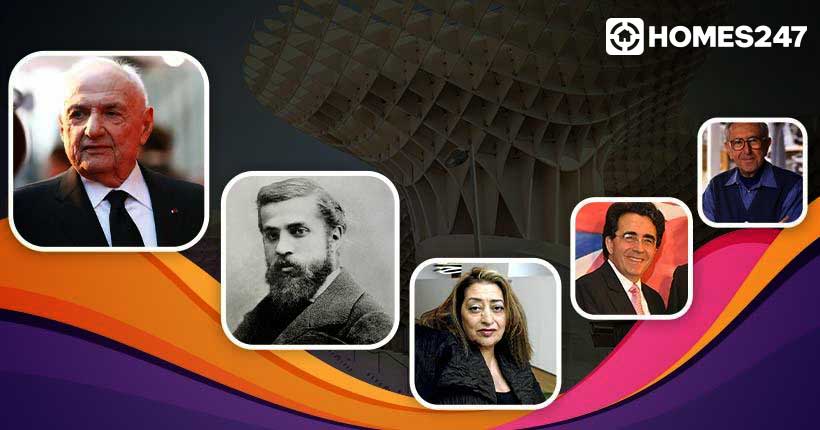




.jpg)



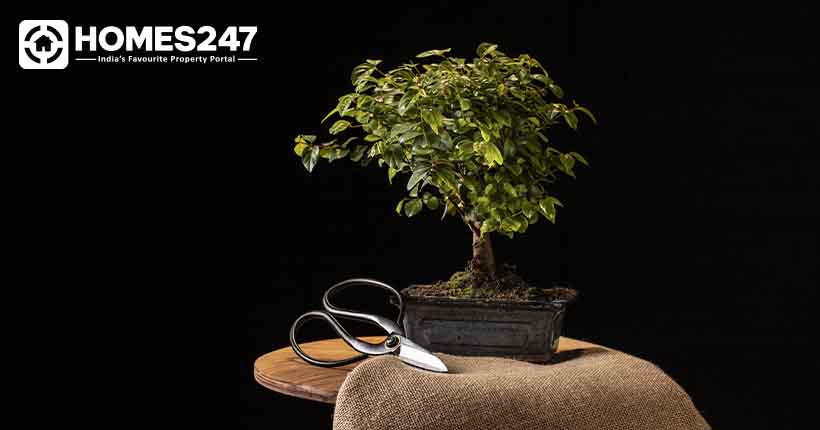


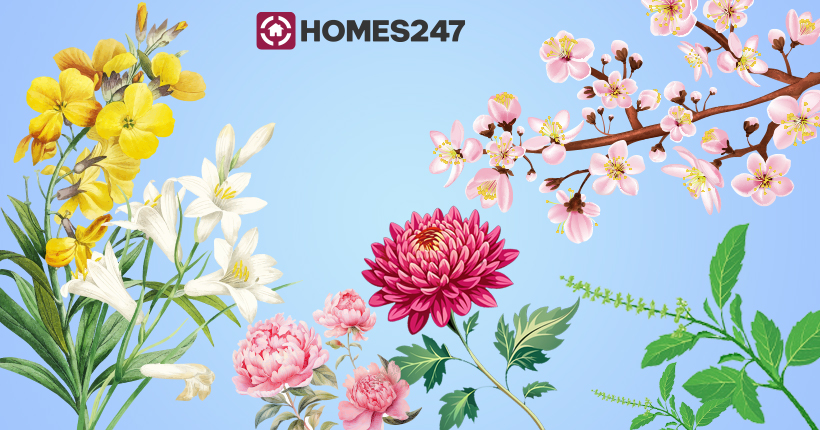
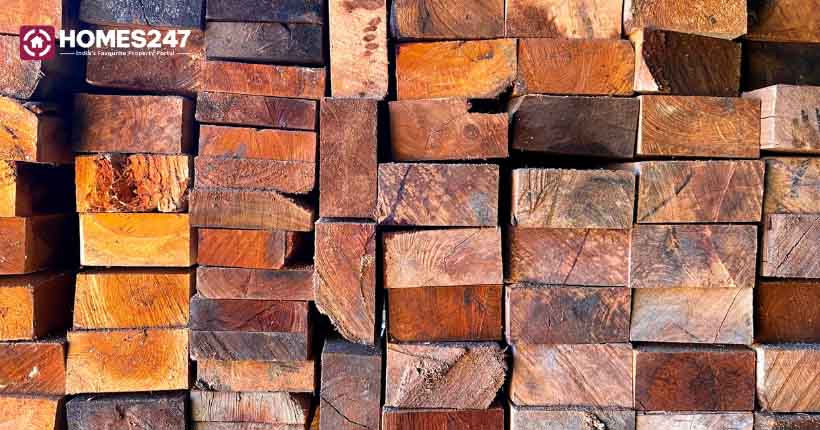


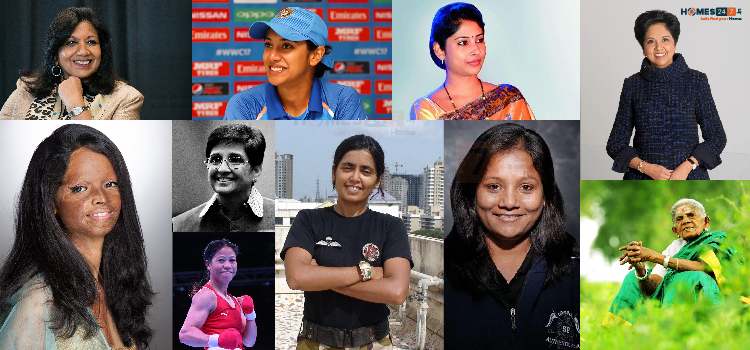
.avif)


.avif)

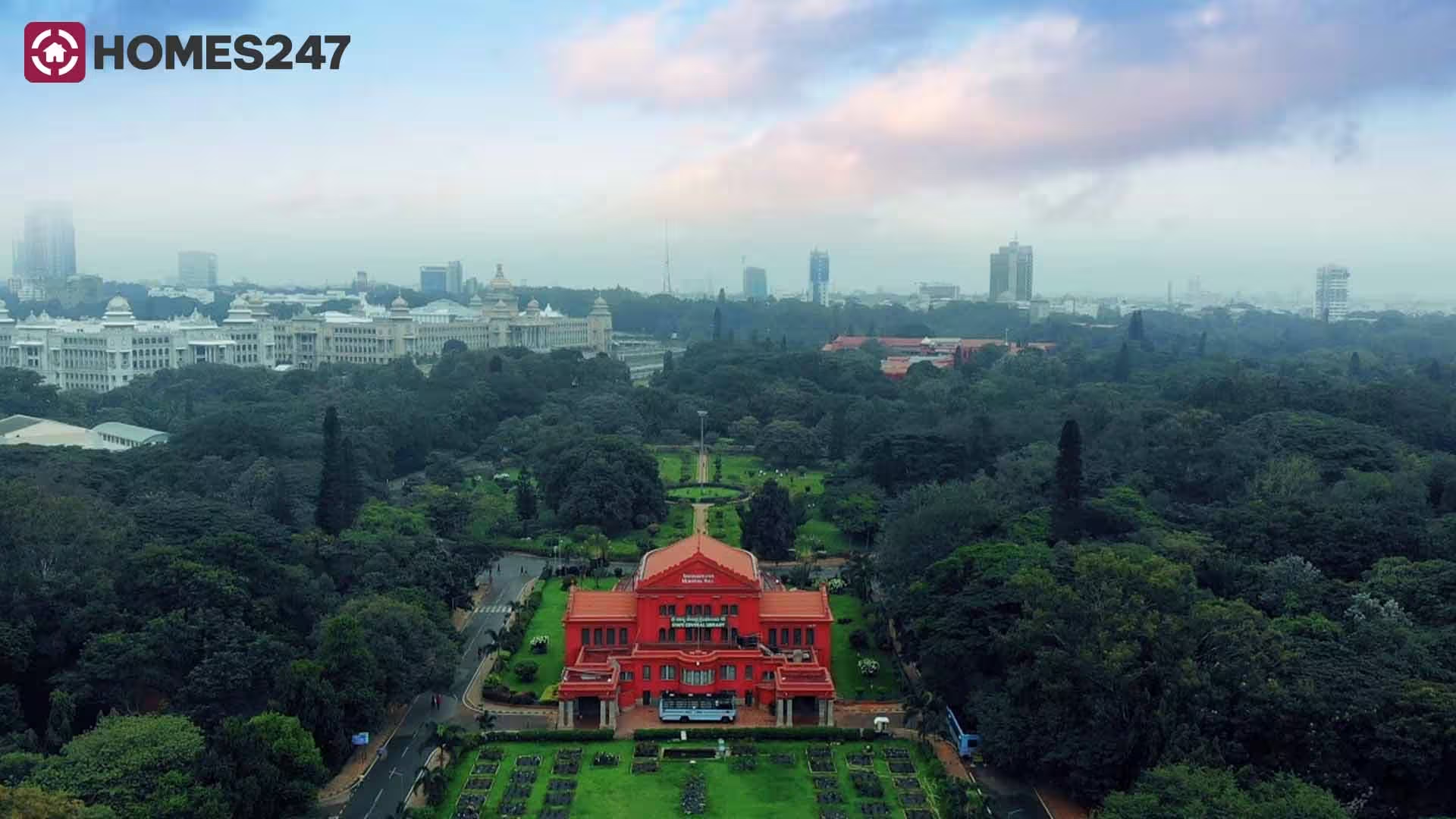
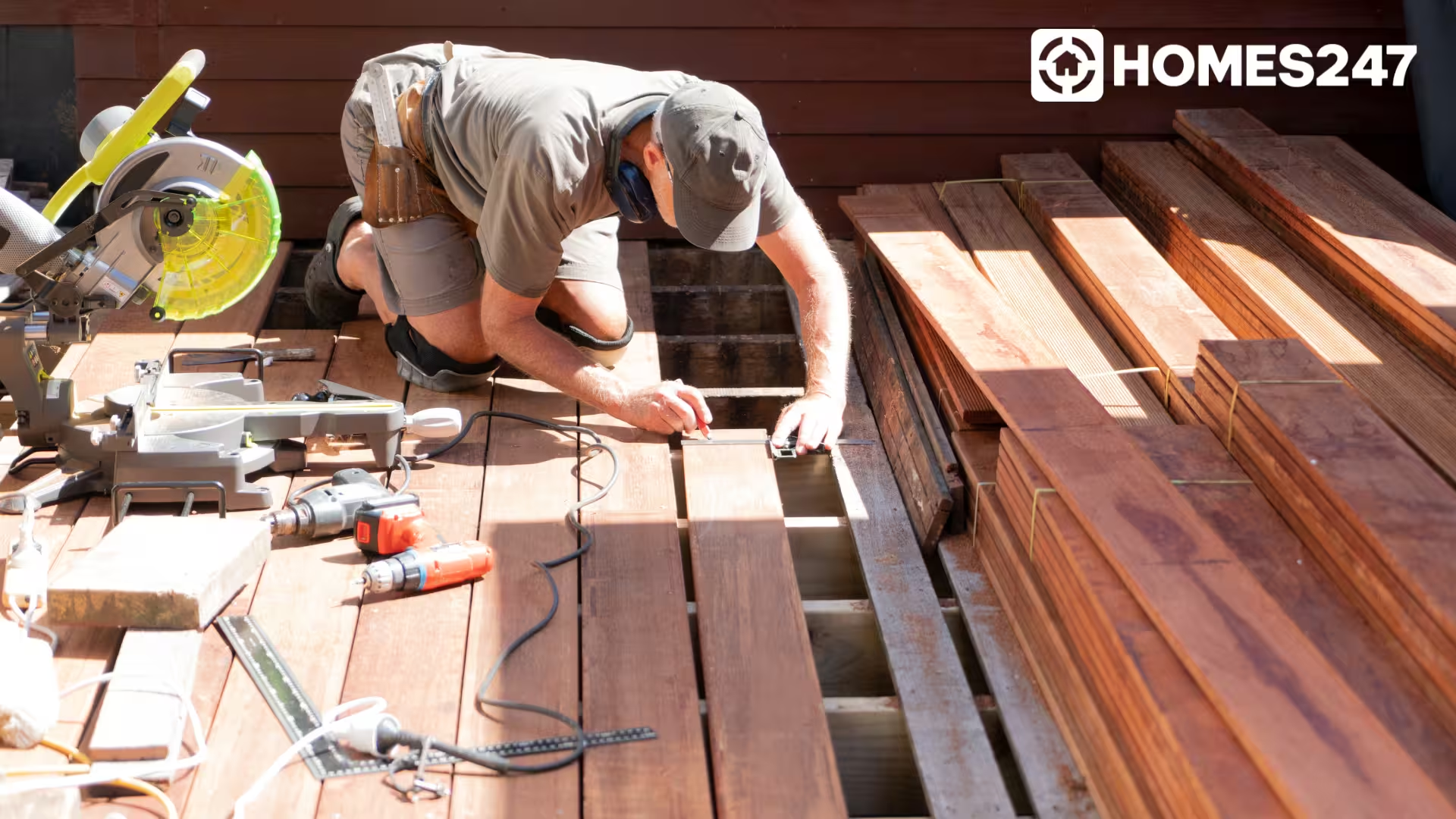

.jpeg)
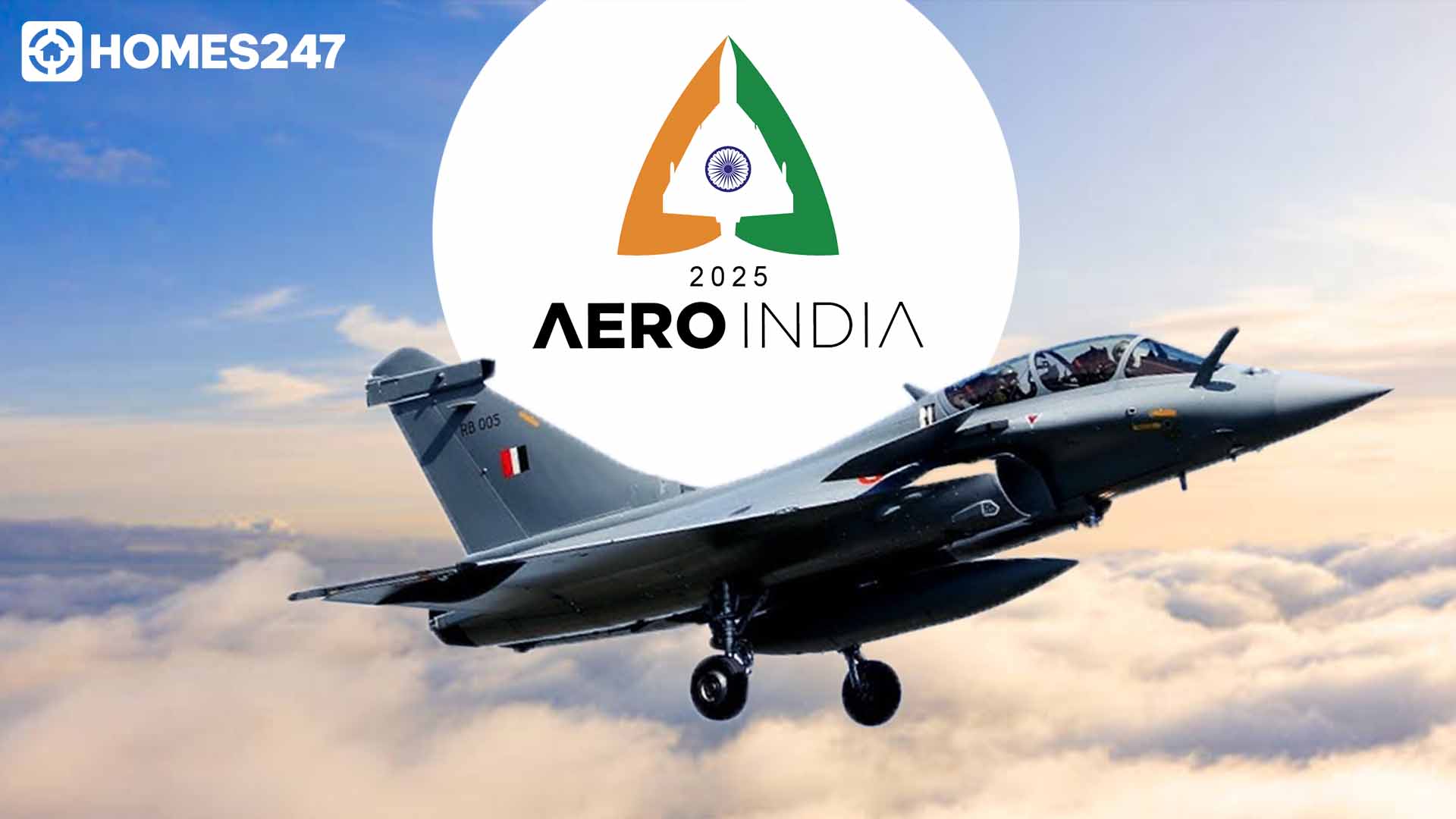
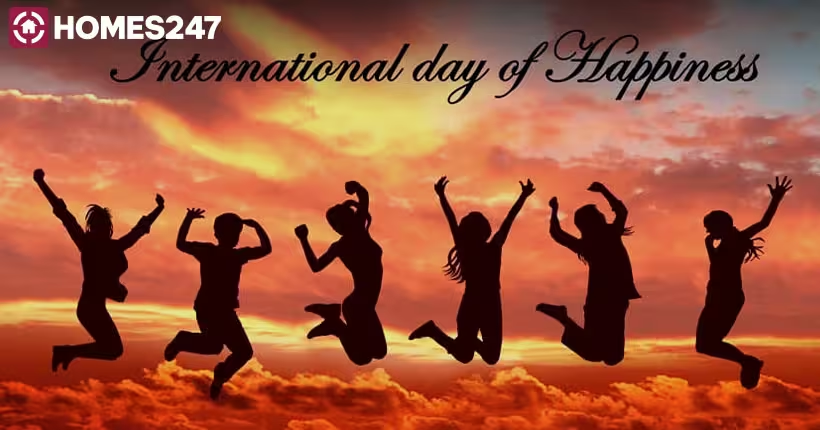
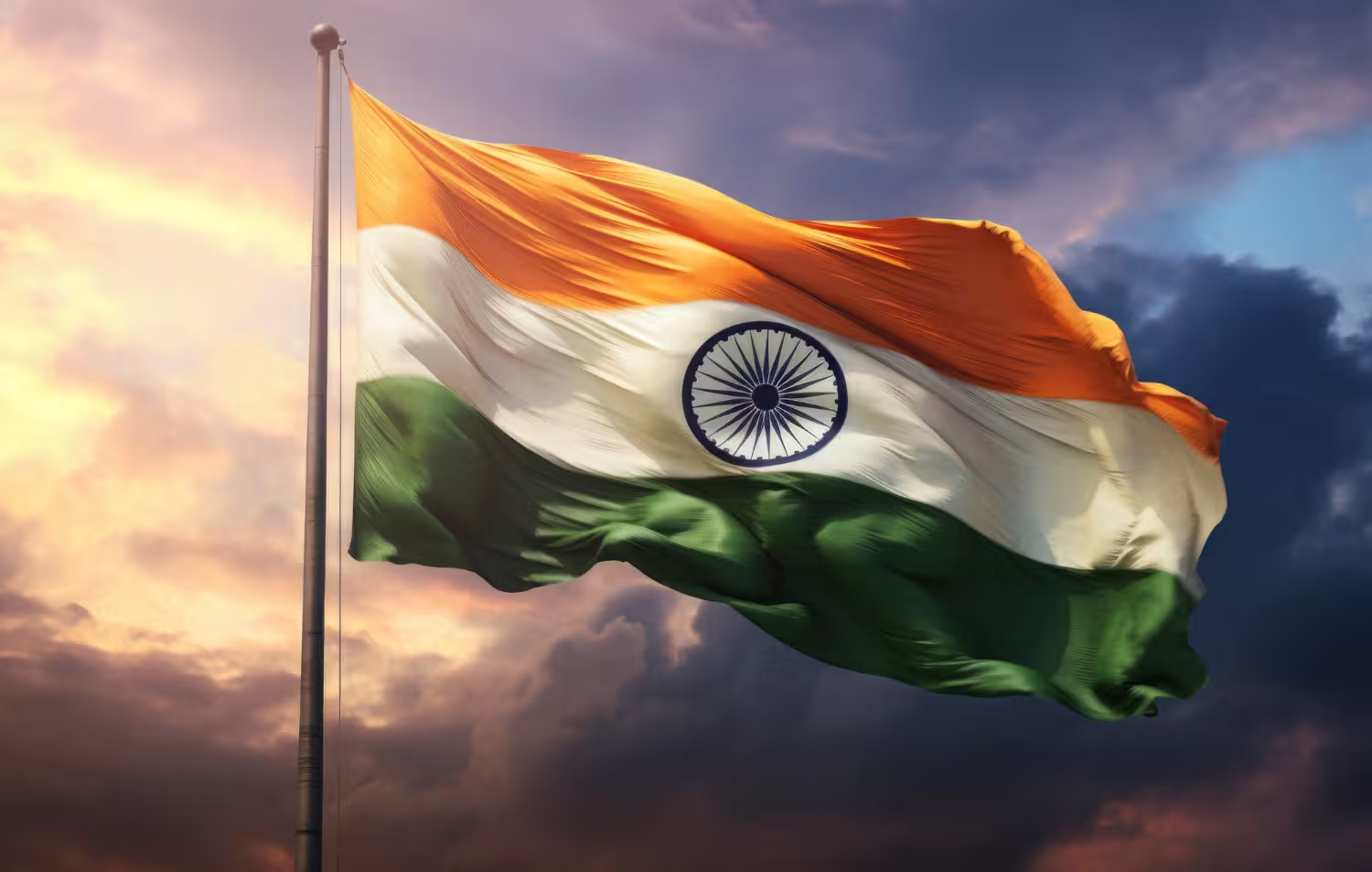
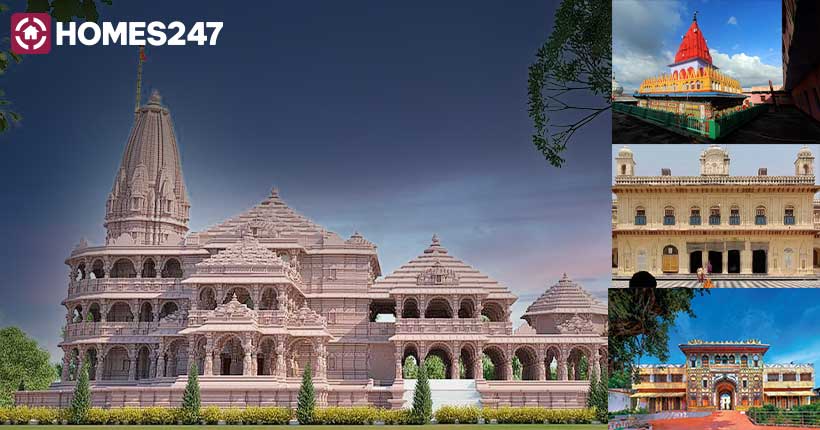
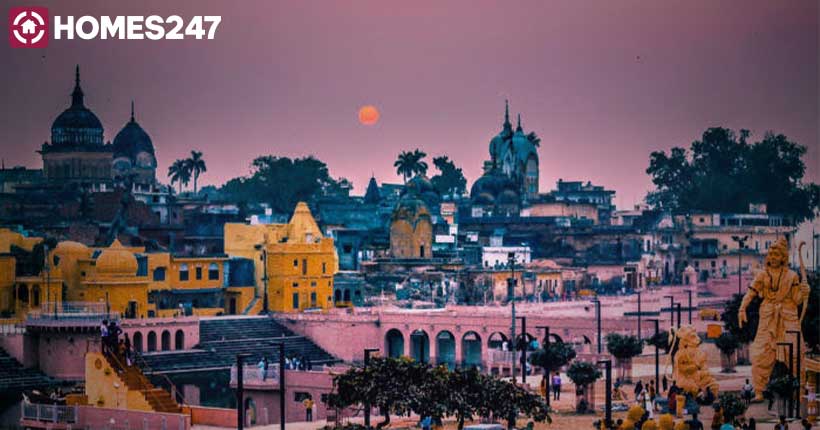
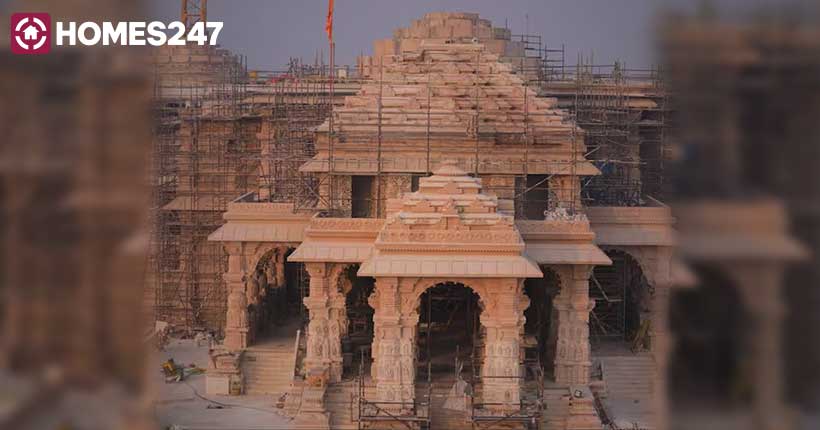
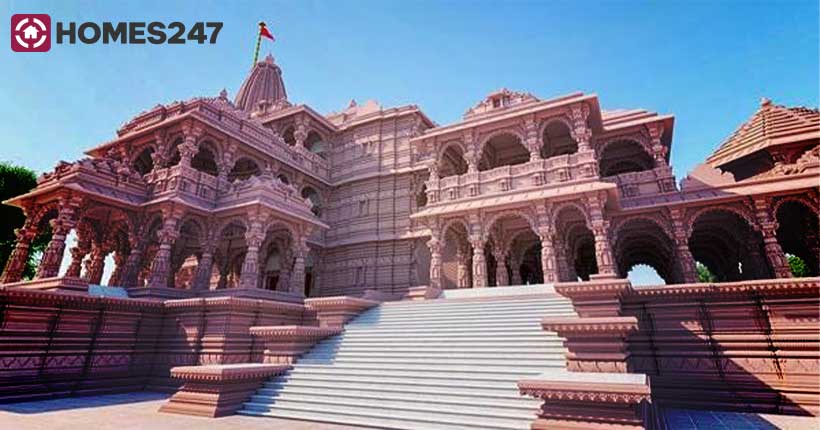


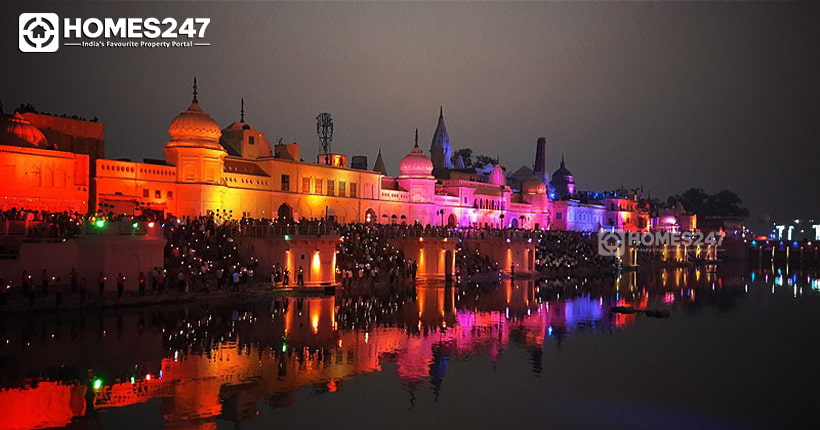
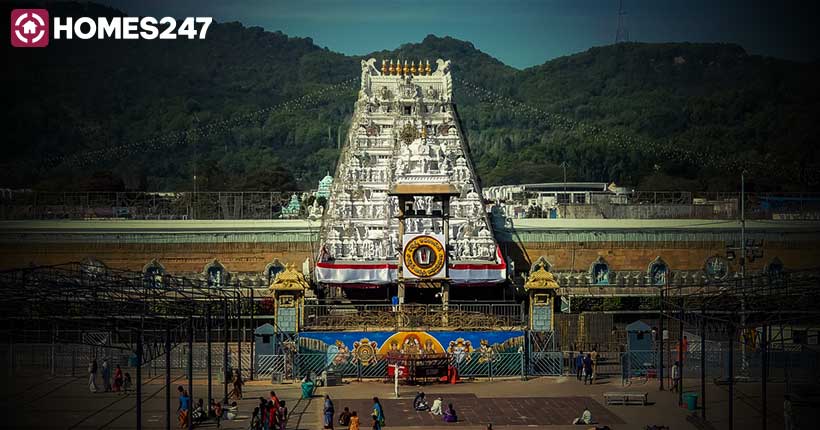



 (1).avif)




